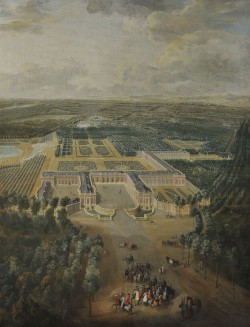1687–1688
The Grand Trianon
In 1670, where the former village of Trianon stood, Louis XIV has the “Trianon de Porcelaine” built to escape the Court’s splendours. It is replaced in 1687 by Jules Hardouin-Mansart’s “Trianon de Marbre”. Italian architecture heavily influenced the architecture of the building, which stands between courtyard and garden. Consisting of one level only, the flat roof of the building is concealed by a balustrade. Renowned for its geometrical French-style gardens , the Grand Trianon has always been surrounded by tens of thousands of perennials and tuberoses.
